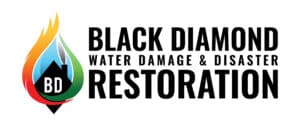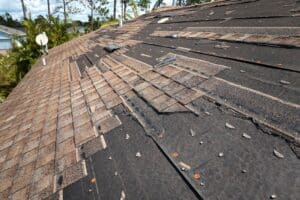Since mold is a potentially serious financial issue and a dangerous health risk, you can’t afford to delay mold remediation, no matter the size of the problem.
Mold tends to develop in dark, damp locations that are typically out of sight, making it difficult to locate and eradicate. People often don’t realize something is wrong until the signs are evident and cumbersome. Whether you’re dealing with a serious situation or a hidden case of mold, hire a mold remediation service to get the job done right.
If your house or business requires mold remediation right away, here’s what you can expect when dealing with this problem in the great state of Utah.
What Is Mold?
Mold is an organism that grows both indoors and outdoors and is a member of the fungus family. Mold is a vital aspect of the ecosystem when it appears in nature. The fungus family aids in the decomposition of dead, organic plants and animal debris. Indoor mold development, on the other hand, is undesirable since it can be hazardous, producing allergies or harmful infections.
There are several types of mold and they all need moisture to grow. Mold growth occurs on wood, carpet, insulation, paper, and food.
What’s the Difference Between Mildew and Mold?
According to the EPA, mildew refers to a type of mold or fungus. Mildew is a generic term used for mold growth that has a flat growth tendency. Mildew thrives on shower walls, windowsills, and other areas with high moisture levels.
Molds are microscopic fungi that grow in the shape of multicellular filaments known as hyphae. Molds are able to grow on any organic substance, including fabric, leather, and paper, as well as the ceilings, walls, and floors of homes with moisture issues. Molds come in many varieties and often emit a strong, musty stench in poorly ventilated areas, such as basements.

How Do You Identify Mold?
Now that we know what mold is, let’s talk about how to find it in your home. Here are seven ways to identify a mold issue:
- Discoloration – Mold is most commonly visible as grey, black, green, or bluish spots in grout lines, on walls, or other surfaces. Keep an eye out for any pink, red, or brown streaks. Mold can have a powdery, fuzzy, or slimy texture. It’s commonly indicated by dark water stains on walls, floors, or ceilings.
- Odor – Even if there are no visible mold symptoms, any musty, earthy, or sour odor suggests that mold is hiding. If you don’t see mold but notice a smell, call in an expert to check hidden colonies of mold in walls, crawl spaces, or along home foundations.
- Check damp areas – If surfaces in the home feel damp—walls, flooring, furniture, cabinetry—the humidity level might be too high. Mold growth is encouraged by high humidity levels in both visible and non-visible areas such as inside couch cushions, mattresses, or walls. Add a dehumidifier or operate your HVAC system more regularly to help minimize humidity. Any mold development should be cleaned up or removed promptly.
- Check your plumbing – A modest, gradual leak might supply enough moisture to trigger mold development. Check all plumbing connections inside and outside the house regularly, repair leaks as soon as possible, and make efforts to get rid of mold.
- Bubbling paint – Sometimes bubbling or peeling paint is simply a sign that you didn’t properly prepare your home before painting, that you didn’t use the best painting techniques, or that your property has an extremely old paint job; however, this could also indicate moisture intrusion. Bubbling can occur on both the real baseboard and the wall when mold is at play.
- Heath symptoms – Inhaling mold spores can lead to serious health problems, especially in people who already have preexisting health conditions. Once in your lungs, the spores can aggravate asthma symptoms and cause respiratory infections. This can cause intense coughing and sneezing as well as shortness of breath. The worst-case scenario is when the fungus grows in your lungs, causing additional symptoms such as chest pain, fever, and blood coughing. If this occurs, get medical assistance immediately and have your home evaluated for mold.
- Health symptoms in your pet – Unusual pet behavior or sickness might also indicate mold exposure. Mold affects pets in the same way that it affects humans. Dogs, for example, are more inclined to nose around in moldy regions or to eat mold by accident. Pets can be far more sensitive to indoor mold than humans because of differences in their body sizes and immune systems. This might include tiredness, hard breathing, coughing, wheezing, vomiting, and a loss of appetite. Mold allergies can cause frequent itchy, swollen and irritated skin, and hair loss in some pets.
- Squishy floors – Moisture problems in your subfloor can make some portions of your floor squishy, and mold might already be forming. If you cannot easily access your subfloor, you might need to lift some of your flooring to check for mold growth. If the mold growth is not widespread, we recommend hiring a professional to ensure thorough mold infestation elimination.
- Past flooding – If your home has previously flooded, there is a good risk that mold is already developing in your space. Although mold may not form immediately following floods, it can grow over time and lead to serious infestations. As a result, you should look for mold in previously flooded locations.

What Does Mold Remediation Do?
Mold remediation services are critical to establishing long-term solutions to a frequent problem seen in many homes and businesses. The best mold remediation businesses use a multi-step method that keeps fungus at its normal levels, while also putting a plan in place to prevent future mold outbreaks.
While the task of a mold remediation firm may appear simple, the top organizations have elaborate protocols in place to treat the problem, protect the area from further growth, and work with qualified partners to remove any toxic substances from the property appropriately. Here are some common steps that mold remediation service teams take:
- Inspection – The first step is to properly inspect the property to determine the degree and nature of the mold problem. Moisture meters, thermal imaging, and other tools may be used to identify hidden mold behind walls, ceilings, or under floors.
- Samples – In certain cases, the team may collect mold samples to evaluate the type and level of contamination. This information is used to create an appropriate remediation plan.
- Containment – To prevent mold spores from spreading to unaffected regions, the team will implement containment procedures. To inhibit spore dispersal, this may entail sealing off the affected area using plastic sheeting and using negative air pressure equipment.
- Proper gear – To guarantee their safety while dealing with mold, team members will wear proper personal protection equipment such as respirators, gloves, and suits.
- Removal and disposal – The mold will next be physically removed from the damaged surfaces by the cleanup crew. Scrubbing, sanding, or utilizing specialized cleaning solutions may be necessary to eliminate mold colonies. Moldy materials and detritus are carefully bagged and disposed of per local standards. This aids in the prevention of cross-contamination.
- Drying – Following mold removal, the team will address underlying moisture concerns by drying impacted areas and installing dehumidification methods. This procedure is critical for preventing mold growth in the future.
- Post-cleaning inspection – Following the completion of the remediation, the team will conduct a final inspection to ensure that all mold has been successfully eradicated and the affected area is safe for human occupancy.
- Prevention – The experts will provide recommendations to avoid future mold problems. This could involve enhancing ventilation, correcting water leaks or moisture issues, and providing advice on how to keep indoor humidity levels stable.
- Verification – Some mold remediation programs may include post-remediation testing to ensure that all mold has been removed. This testing verifies that the property is fit for habitation.
Mold removal is a specialized subject that involves expert knowledge, training, and the use of appropriate equipment and techniques to ensure safe and effective mold eradication. Hiring a trained mold remediation firm is critical for properly resolving mold concerns and preventing their recurrence.
Call Black Diamond Restoration for Utah Mold Remediation Today
Black Diamond Restoration is a market leader in Utah mold remediation. You can rely on our mold removal firm to complete the work correctly. We provide complete, professional services to both homeowners and companies. We use cutting-edge technology, and our highly experienced personnel are dedicated to providing you with exceptional customer service.
Black Diamond Restoration is a market leader in mold cleanup. We take pleasure in being quick, efficient, and dependable in all we do. Please contact us if you notice or suspect mold growth in your house.
To learn more, call us at 801.316.8997 or visit our website now! We are based in Murray, Utah, and we service the Salt Lake and Utah Valley areas. Work with Black Diamond Restoration to restore your property today!
toto slot






